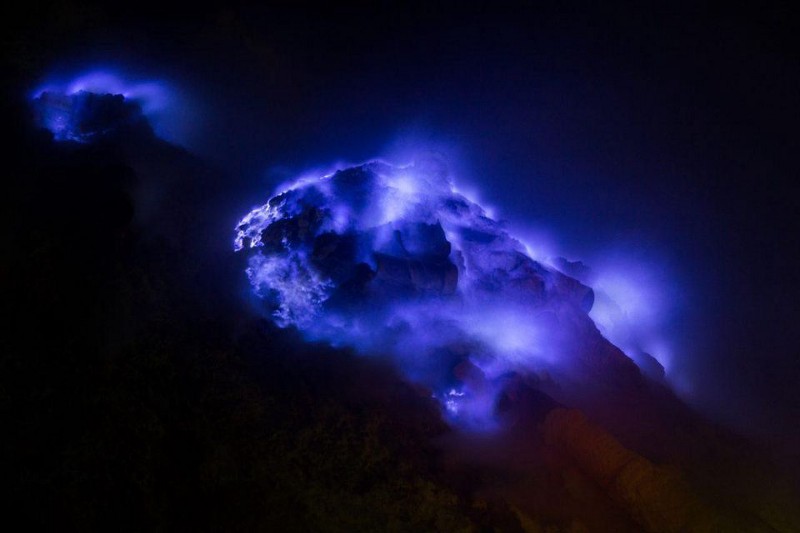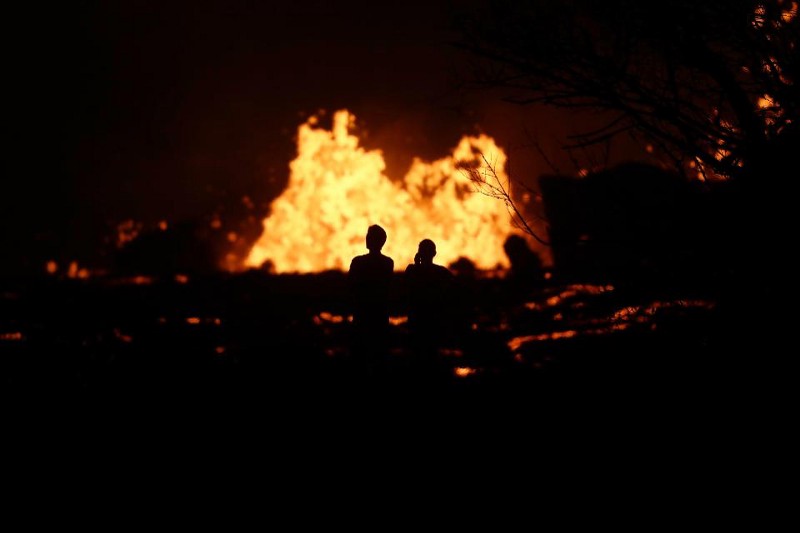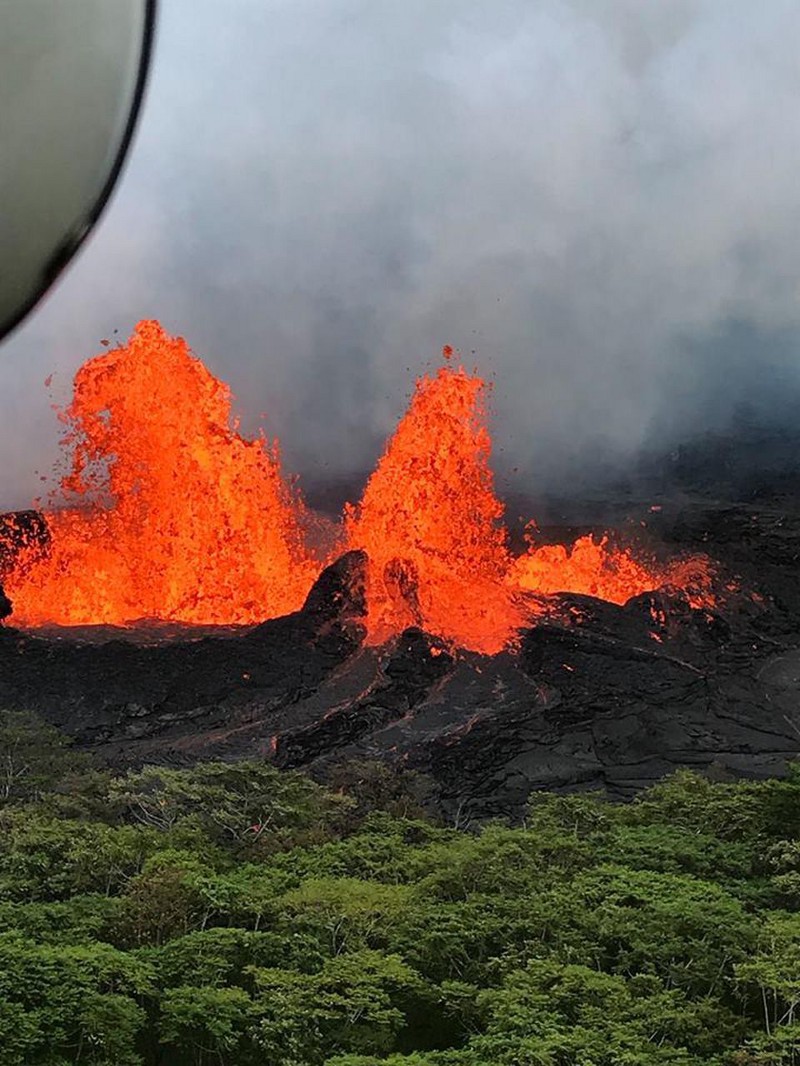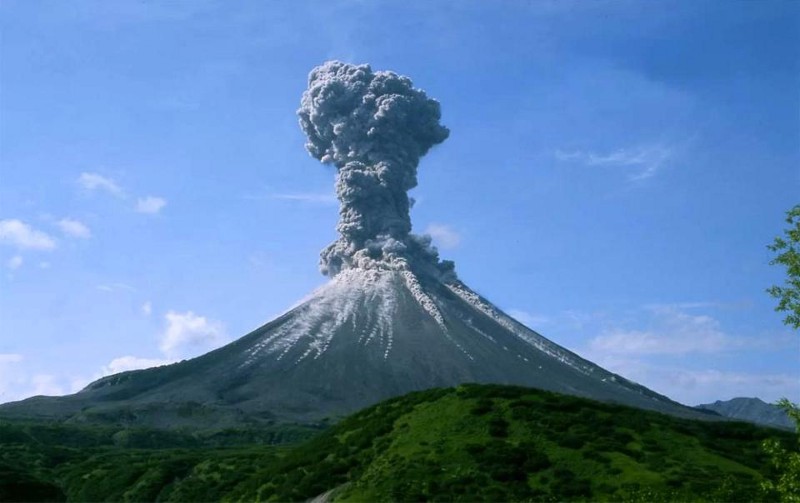Getting insured on an active volcano

The Royal Gardens subdivision in Hawai’i being inundated with lava flows during a 1983 eruption of Kilauea. Image courtesy of the USGS.
The game of insurance is everywhere in the news these days so it isn’t too surprising to run across this brief article about the perils of getting insured if you live on an active volcano. Many people who live on the big island of Hawai’i face this challenge because a large swaths of the island fall into what is called a “Lava Zone 1”, which more or less means that you live someplace that lava is likely to visit in the foreseeable future. Considering that the entire island is made of overlapping volcanoes and their associated lava flows, it is not too surprising that people would want to know where it is more or less likely that a lava flow might incur its slow-moving wrath. Thus, the division of the island into relative lava hazard zones. These zones represent areas that have been covered by lava over the last 200 and 750 years, as defined by Mullineux and Peterson for the USGS back in 1974. It pretty clearly shows that building in a Lava Zone 1 area that you have more than a 50-50 shot of being covered in lava over a 750 year period. Now, I’m not sure how this all breaks down in the vast computers of the insurance companies, but apparently its not a bet they’re willing to take anymore. Lesson here might be that if you want to live in places like the slopes of Kilauea, insurance might not be easy to come by – but that is the tradeoff: natural beauty for a modern sense of security.
Just to remind you how active Kilauea is, the glow at the summit vent of the volcano has returned after being snuffed out by a rockfall earlier this summer. There is a brief infrared thermal video of the Halema`uma`u Crater showing the heat and gases escaping from the revived vent.




